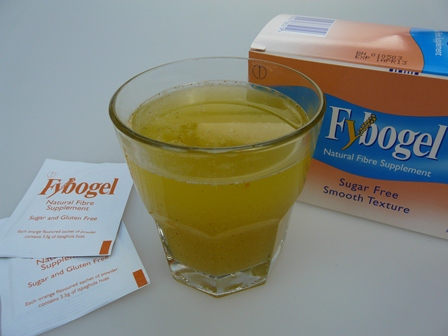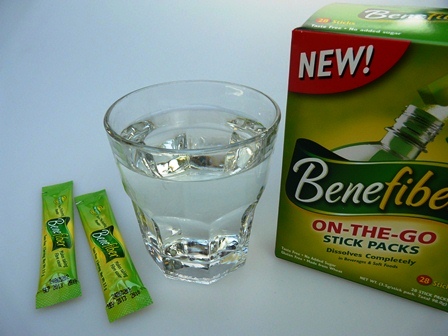Eat to beat constipation

Forget laxatives - get your system regular with a high-fibre diet. A bowel motion each day is not essential, but it is important that your stools are soft and easy to pass. "Straining" to pass a bowel motion should be avoided as it can cause haemorrhoids which only make life worse! Aim for a soft consistency rather than regularity!
Constipation is a common complaint these days thanks to low intakes of fibre and water. There's nothing worse than sitting on the toilet for hours hoping for some action! Change of diet (say when travelling) and lack of exercise also contribute. Codeine-based painkillers also tend to make people constipated, another time when it pays to up your fibre intake.
Fibre's other health benefits
Fibre is more than just an aid against constipation. It has a host of other health benefits. It can:
- help prevent diverticular disease (inflammation of the bowel), haemorrhoids and irritable bowel syndrome
- change the type and number of bacteria that live naturally in the bowel and help remove potential carcinogens (cancer-causing substances) that may cause cancer of the colon/bowel.
- increase transit time which means you don't fully digest all the kilojoules/calories you consume so helps with weight control.
- lower cholesterol - from soluble fibres from oats, barley, legumes, pectin and guar.
- slow down the absorption of nutrients into the bloodstream so avoiding a spike in sugar and insulin output, helpful for anyone with type 2 diabetes.
- force you to slow down your rate of eating as high-fibre foods often require chewing and create a feeling of fullness.
How much
Nutritionists recommend around 30g or more a day. The official recommended daily intake is 30g for men and 25g for women but it's ok to eat more.
You could reach the goal of 30g by eating:
- A bowl of bran cereal (All-Bran, Bran Flakes) +
- 3 slices of wholemeal or multigrain bread +
- 2 pieces of fruit or vegetables +
- A small can 100g baked beans.
Many people believe they are eating enough fibre already, but studies show that most of us only eat around half the dietary fibre required for normal bowel habits.
For children
Use the Age + 5 Rule. Simply add 5 to your child's age to come up with the quantity of fibre they should eat in grams. For example, a ten-year-old would need 10 + 5 = 15 grams of fibre a day.
9 top tips to beat constipation
1. Drink plenty of water each day, as fibre absorbs a lot of water (around 70 per cent of the weight of bowel motions is water).
2. Substitute high-fibre foods and snacks for any low-fibre choices you now eat. The easiest foods to start with are your breakfast cereal, your daily bread and any mid-meal snacks (swap biscuits for wholemeal crispbreads, fresh or dried fruit). Next try to eat a meal with beans or lentils every second day.
3. Forget fruit juice, which has all the kilojoules and nutrients of fruit, minus the fibre. Instead drink water or weak tea and choose a piece of fresh fruit, preferably with the skin on.
4. Regular exercise helps maintain bowel tone and internal muscles. A brisk walk each day (once called a "constitional" for obvious reasons) is all you need.
5. Forget strict diets which can often supply so little food that they induce constipation. Stick to eating more high-fibre foods and three balanced meals a day.
6. Don't expect a few tablespoons of unprocessed bran to be enough. It's a good start but you need to eat more high-fibre FOODS to get the most benefit.
7. Don't forget that old-fashioned standby PRUNES. They not only have a high fibre content but also contain a substance which acts as a natural mild laxative. They make a handy snack. I like this summary of the laxative effect of prunes from the New York Times.
8. Allow yourself enough time to relax when you need to pass a motion. Rushing and "straining" too hard increases the pressure in the blood vessels around your anus setting the scene for haemorrhoids.
9. Finally if high-fibre eating does not relieve your constipation, seek the advice of your doctor, especially during pregnancy when constipation is common. Do not prescribe laxatives yourself nor take them for long periods, as some can damage the nerves of the bowel.
High-fibre meal plan
(foods in blue are good sources of fibre)
Breakfast
- Piece of fresh fruit (no juice) or compote of dried fruit
- Bowl of bran cereal OR wholemeal cereal OR rolled oats with milk OR muesli
- 1-2 tablespoons wheat, rice or barley bran OR psyllium husks for extra fibre if needed
- Wholemeal toast or muffin spread with butter or margarine
- Baked beans or creamed corn (optional)
Lunch
- Mixed grain sandwich with lots of salad and chicken, salmon, tuna, cold meat, eggs, cheese or baked beans OR
- Lentil and vegetable dahl with wholemeal bread
- Apple or pear, with the skin OR other fresh fruit
Dinner
- Grilled fish or chicken or lean meat
- Serve of brown rice or jacket baked potato
- 2-3 high-fibre vegetables (corn, peas, cabbage, Brussels sprouts) OR bean salad
- Rhubarb and apple crumble
Between meals
Fresh fruit, dried fruit esp 5-6 prunes, fruit and nut trail mix, nut bars, wheatmeal biscuits, bran biscuits, cake made with wholemeal flour or bran or bran cereal (try my easy Apricot bran loaf), brown rice cakes or rye crispbread with peanut butter, air-popped popcorn.
During pregnancy
Constipation is a common complaint of pregnant women because of hormonal changes that make the bowel more 'sluggish' and less able to function. Things can be made worse if you take iron supplements so nutritionists suggest increasing your fibre intake (see above) and taking them only on alternate days.
Two convenient forms of fibre


Downloads / Fact Sheets
Download my free Fact Sheet on 7 ways to boost your fibre intake. It's an easy way to sumamrise the tips here.



